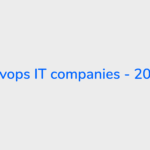How to create your own website for small business and sell things from scratch
Your website is the most effective deals and marketing tool in your arsenal. In just five easy(ish) steps, you can create your own website for a small business and it’s an attractive personal or business that engages guests and thrills them to work with you. Here’s how to get begun.
Pick a Domain Name
A domain is the unique name of your own website.
For your own website for small businesses, you can choose any name you want, but it’s best to have one that matches your business or professional name. Not only does this maintain your branding consistent, but it can also greatly affect how you appear in search engine outcomes. A good domain name may help you place more increased rankings, which can increase the number of people who click to access your website.
As you’re brainstorming domain names, heed these useful tips:
Include keywords appropriate to your business to increase your visibility in search engines.
Ensure it’s easy to spell.
If you have a problem brainstorming, use a domain name generator as a jumping-off point.
Keep your domain short to make it comfortable for visitors to remember.
Avoid abbreviations, acronyms, hyphens, and numbers.
Aim to use standard top-level domains, or TLDs, such as .com or .net, or one that reasonably relates to you or your small business.
Make sure no one else is already using it. While you can buy a domain from someone else, this can get costly. You may be suitable for picking another name or using a different top-level domain, like .net, instead.

Register Your Domain and Choose Your Design and Hosting Providers
Registering a domain and picking a hosting provider are two crucial steps in building a website. In this digital age, having an online presence is essential for businesses and individuals alike, and the first step towards establishing that presence is registering a domain.
The process of registering a domain is straightforward. You can do it through a domain registrar such as Domain.com or Network Solutions. These providers will register ownership of your chosen domain name for you, typically for a yearly fee between INR 500 and INR 1,000 depending on the top-level domain (TLD) you choose.
However, registering a domain name is just the first step. You will also need to find a hosting provider where you can store your website files and make your website accessible to visitors. There are many hosting providers to choose from, ranging from shared hosting to dedicated hosting.
To simplify things, some domain registrars also offer hosting and website design capabilities. This means you can register your domain, host your website, and design it all in one place. This option can save you time and effort, but it’s important to make sure that the provider you choose offers the features and capabilities you need.
When choosing a hosting provider, consider factors such as uptime guarantees, customer support, security features, and pricing plans. It’s also important to consider the type of website you want to build and the tools and software you’ll need to achieve your vision.
Overall, registering a domain and picking a hosting provider are critical steps in creating a successful website. Take the time to research your options and choose the provider that best meets your needs and budget. With the right tools and resources, you can create a website that stands out and helps you achieve your goals.
Add Useful Pages and Engaging Content
You have many options when it comes to how you manage the content about your business and its services.
That said, aim to include these important pages on your website:
A unique homepage. The main hub of your business website should delight people and tell them exactly what you do and whom you help. Contain eye-catching graphics, readable fonts, concise and clear descriptions, and enticing calls to action.
An informative About Us page. Share the birth story of your business. Highlight your achievements, mission, and deals. You can also introduce any team members to encourage deeper relationships with customers.
Booking or shop page. Drive more income and merge a third-party online scheduling platform or an e-commerce platform, such as HoneyBook or WooCommerce.
A convenient contact page. Contain social media accounts, emails, phone numbers, addresses, and a contact form to make it easier for people to reach you. If it suits your business, add your working hours, too.
Memorable content. Sharing compelling content proves you as an expert in your industry and helps grow a loyal community for your business. This might contain blogs, videos, podcast episodes, case studies, and more. As compensation, this content may help raise your ranking in search results and boost site visitors.
A robust FAQ page. Giving answers to common queries not only supports building more trust with your brand but may also decrease the number of calls and support tickets you receive.
Testimonials and press coverage. Increase your credibility by sharing your successes. Build a page that shares favorable thoughts about your services and contains any mention of your business in famous media outlets.
Optimize Your Website for Search Engines
Search engine optimization, or SEO, is the practice of refining your business website so your pages rank increased in search engine results pages (SERPs), most notably Google. It’s what helps people find you.
As you create your own website from scratch, keep these basic SEO techniques in sense to improve your visibility and drive more traffic:
Use appropriate phrases, called keywords, throughout your posts and pages. Don’t write keywords just for the sake of them, though. Make sure your choices are intentional. Overuse may negatively affect your ranking.
Consistently publish useful content for your clients or readers.
Perform routine content audits or cleanups to notice what you can crystallize or refresh.
Keep your website’s loading speed as low as potential by optimizing images or enabling browser caching. These tweaks can help your web page rank increased in search engine results. You can count your page speed on GTmetrix.(Learn more about the significance of webpage loading speed.)
Confirm your design and content work correctly on computers, mobile phones, and tablets. Do not underestimate your website’s performance on mobile gadgets. Up to half of web traffic now arrives from smartphones.
It’s wonderful to have a beautifully designed your website to sell things, but search engines want to see more appropriate than that to show your authority when they index it in their search results.
As you optimize your site for search, make sure you’re keeping your guests in mind. You’llCorrect want to select easy navigation systems and create pages that enable fast load times. To accommodate a range of user proficiency, follow Census of India guidelines to make your site as convenient as possible.
Examine Your Site Before You Strike ‘Publish’
Before you release your website into the real world, you’ll need to test it to make sure it works correctly.
Among other specialties, make sure you:
Read through your content to confirm everything is correct and error-free.
Check for any damaged links.
Delete any filler content from your website theme or template.
Check your website across browsers like Google Chrome, Mozilla Firefox, Safari, and more.
Link your website to Google Analytics to monitor its interpretation.
Once you’re ready, hit publish. To help drive traffic to your newly minted website, transfer it with friends, market it with clients, and include it on your LinkedIn, Twitter, Instagram, Facebook, and additional social media platforms.
Maintain Your Site Up to Date
You aren’t completed with your site the minute you hit publish. To remain high in search rankings and enhance your visitors’ experience, you’ll need to consistently maintain your website. Assume adding the following to your webmaster to-do list:
Use webmaster and analytics tools, such as Google Analytics, to monitor how users use your website. Some website concentration metrics to follow include bounce rates, click-through rates, and average session period.
Achieve monthly reviews to ensure all elements of your website, including internal and external links, pages, and plug-ins, are operating as planned.
Update your “About Us” page with new team partners or accomplishments.

